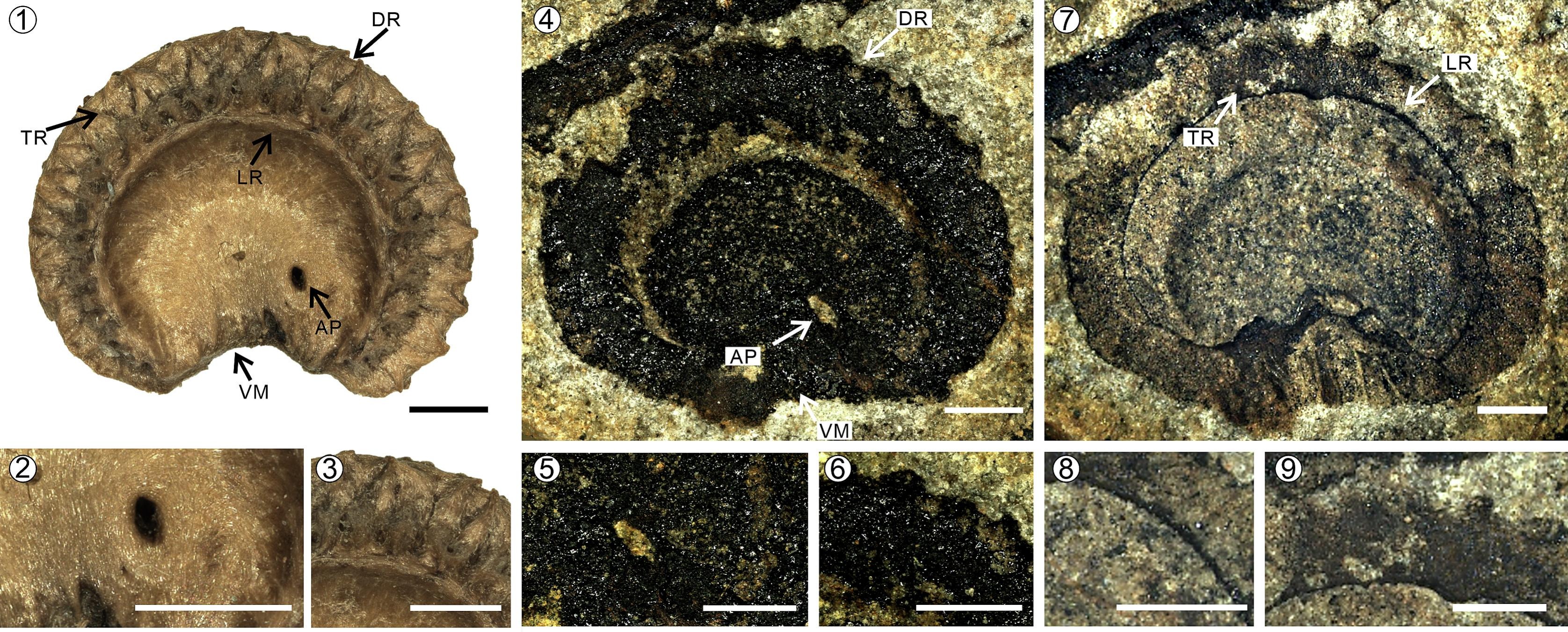The moonseed family (Menispermaceae) consists mainly of vines, rare shrubs or trees with unisexual flowers, and drupaceous fruits. Up to now, six species and three unidentified species in morphogenus Palaeosinomenium have been reported. However, more fossil evidence is required to detect the morphological evolution between the morphogenus and the living genera.
During their field work, researchers from Xishuangbanna Tropical Botanical Garden (XTBG) collected an endocarp specimen of moonseed plant family from the Upper Eocene Shuanghe Formation in the Jianchuan Basin, Yunnan, China. The endocarp fossil is characterized by a unique bilaterally compressed condyle (Menispermum type), and a horseshoe-shaped locule that could be assigned to the subfamily Menispermoideae.
After morphological studies and literature review, the researchers assigned the fossil endocarp from Jianchuan Basin to a new species and named it as Palaeosinomenium hengduanensis to refer to it type locality in the Hengduan Mountain Range. The new fossil species was published in Review of Palaeobotany and Palynology.
The new fossil species is characterized by a horseshoe-shaped endocarp, an excavated central area, surrounded by a slightly asymmetrical C-shaped lateral ridge, and an elliptic aperture located near the longer endocarp limb.
Moreover, the fossil species share similar morphological characteristics with Sinomenium, which appeared in the southeastern margin of the Tibetan Plateau by the Eocene. The fossil site is located in the modern distribution area of the living species Sinomenium acutum, a potential nearest living relative of the new species.Modern and the late Eocene climate in Jianchuan are suitable for tribe Menispermeae.
“The finding of P. hengduanensis supports that the divergence within the tribe Menispermeae might have occurred by the Late Eocene and the species similar to modern S. acutum appeared in the southeastern margin of the Tibetan Plateau as early as in the Late Eocene,” said SU Tao of XTBG.
Contact
SU Tao Ph.D Principal Investigator
Key Laboratory of Tropical Forest Ecology, Xishuangbanna Tropical Botanical Garden, Chinese Academy of Sciences, Mengla, Yunnan 666303, China
E-mail: sutao@xtbg.org.cn

Endocarps of Sinomenium acutum (1–3) and Palaeosinomenium hengduanensis (4–9) . (Image by WU Mengxiao)

